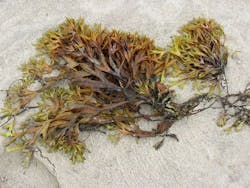Research on Algae Bloom Nutrients in Florida Gets Funding
Scientists are studying how to reduce nutrients that fuel algae blooms in Tampa Bay, Florida.
Members of University of Florida's Institute of Food and Agricultural Sciences have been partnering with Mote Marine Laboratory to prepare their study on nitrogen in rainwater, storm water and wastewater effluent, reported WUSF News, the flagship National Public Radio member station in the Tampa Bay area.
According to the team, the goal is to narrow which sources are feeding toxic red tide algae blooms in Tampa Bay over the span of two dry seasons and two wet seasons. A grant of $80,000 was received from the Tampa Bay Estuary Program.
Researchers will be able to conduct an analysis called isotopic characterization of nitrogen in storm runoff to determine the origins. They will also able to look into Pyrodinium bahamense, which blooms regularly in Florida coastal waters, according to the Florida Fish and Wildlife Conservation Commission.
The funds will produce an education program on connections between air pollutants and water quality. These materials will be made available in English and Spanish to teach residents about water quality problems in Tampa Bay.
The researchers will start chasing storms and blooms in mostly residential areas of Hillsborough and Pinellas counties, reported WUSF News.
“Anything that gives us more information about where these nutrients, primarily nitrogen, is coming from, anything that gives us more information about Karenia brevis physiology and growth and how it responds to different sources of nutrients in the urban environment, anything that gives us more knowledge and understanding on that is one step closer,” said Mary Lusk, assistant professor in the Soil and Water Sciences Department at UF.
The UF team, which includes PhD student Amanda Muni-Morgan, will monitor storm activity to collect rainfall and storm water runoff from streets and sidewalks. Once samples are collected, they will be analyzed at a lab for nitrogen and phosphorus.
The samples will examine nearshore nutrient sources and how they expand in summer blooms.
“From a prior study, we know that there's over 13, possibly 14 now if you add Piney Point, nutrient sources for red tides,” said Cynthia Heil, senior researcher at Mote and director of the Red Tide Institute, reported WUSF News. “These near-shore inputs are one of them. This is the next step in starting to look a little more closely, focus on these near-shore nutrients and start to pull them apart.”
